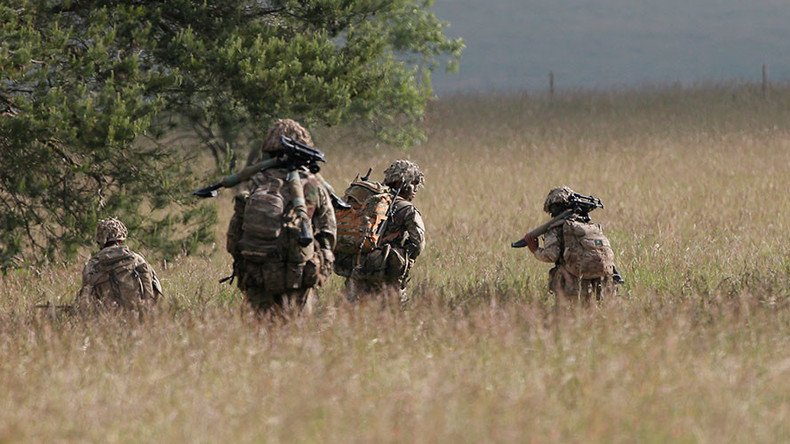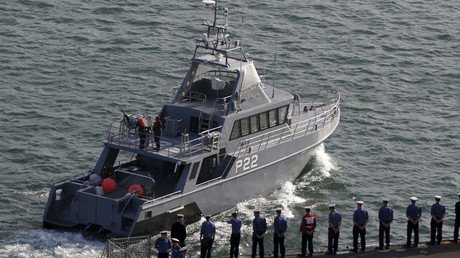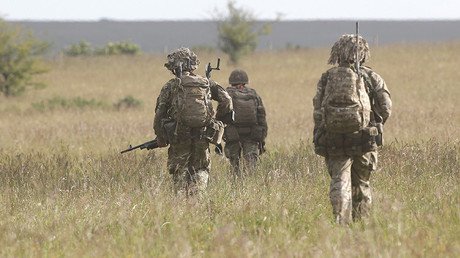MoD facing £6 billion cuts for 10-year equipment plan as auditors say affordability at risk

The National Audit Office has warned that the Ministry of Defence has to find almost £6 billion for their 10-year equipment modernization plan if they want to remain within budget. This might mean dipping into a reserve fund set aside for unforeseen risks.
Whitehall’s spending watchdog looked into the MoD’s spending plans for 2016 to 2026 and released its report on Friday. The total cost currently stands at £178 billion, and the plan among others includes procuring twenty-four new F-35 fighter planes, Dreadnought nuclear submarines and nine Boeing P-8 Poseidon reconnaissance craft to replace the Royal Air Force’s old Nimrod jets.
The NAO said the government may be running over budgeted funds as well as emergency money. One of the key concerns is that the entire £10.7 billion contingency fund set aside to meet emerging risks over the next decade may have to be used to meet the already laid-out goals.
In addition, the MoD must secure £5.8bn in cost cuts over the next decade to ensure affordability. Where this money comes from is “still under development” while the options under study are “extremely challenging”.
“The affordability of the [MoD Equipment] Plan is now at greater risk than at any time since reporting was introduced in 2012,” the NAO report reads.
“The difference is to be found partly by demanding efficiency targets and there is little room for unplanned cost growth. The MoD must actively guard against the risk of a return to previous practice where affordability could only be maintained by delaying or reducing the scope of projects.”
The deficit can be partially explained by the fact that the Equipment Plan itself is getting more expensive, since the £178 billion costed now is a 7% increase over the previous year. This largely came through £24.4bn of additional commitments made in the 2015 strategic defence and security review.
Another factor is the plummeting pound triggered by the Brexit vote in June 2016.
“As of 10 January 2017, the pound was 21.4 percent below the exchange rate with the US dollar and percent below the exchange rate for the euro used in the department’s planning assumptions. Approximately £18.6bn of the plan is denominated in US dollars and £2.6bn in euros over 10 years.”
The British pound hit a 31-year-low earlier in January amid fears of a ‘hard’ Brexit, wherein the UK gives up access to the European common market in exchange for fuller control of its borders. The pound sterling has dropped as much as 20 percent against the US dollar since Britain voted to quit the European Union last June. The currency has come under renewed pressure and losses accelerated after Prime Minister Theresa May voiced plans to speed up the process for the UK’s formal exit.
If the pound continues its downward trend, it could add a further £3 billion to the MoD’s plans. “It is worrying to see that the costs of the new commitments arising from the review considerably exceed the net increase in funding for the plan,” said head of the NAO, Sir Amyas Morse.
The Ministry of Defense has however downplayed the NAO’s worrying findings, reiterating its commitment to provide its troops with top-of-the-range equipment.
“I welcome the NAO’s report into the Department’s Equipment Plan,” said Harriett Baldwin, Parliamentary Under Secretary of State at the Ministry of Defense, said in a statement.
“SDSR 2015 announced a rising defense budget and a ten-year £178 billion Equipment Plan which will deliver the best kit for our Armed Forces at the best value for the taxpayer. We are focused on maintaining an affordable programme and delivering the efficiencies we need to reinvest in cutting-edge ships, planes, versatile strike brigades, and greater cyber capabilities, so that our armed forces have the equipment they need to keep the UK safe and secure.”
The Armed Forces have been criticized for their excess spending before.
In October 2016, the British Army agreed to buy 800 infantry vehicles from Germany at £4 million each after already having spent £300 million on similar such deals over the last two decades, none of which resulted in any new hardware.
But despite the UK having the fifth-highest military budget in the world, the Army’s own think tank CHACR (the Centre for Historical Analysis and Conflict Research) has recently said that it was “hollowed out” to such an extent that it could be overwhelmed by an invading force “in an afternoon.”















